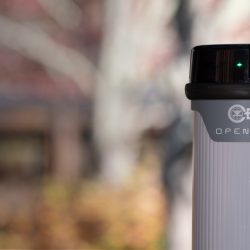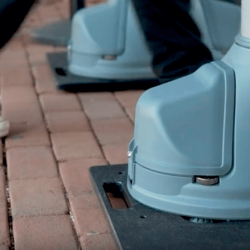When Do School Gun Incidents Occur?
School shootings remain a tragic reality in many communities. But understanding when these incidents occur can help educators, security professionals, and policymakers target prevention efforts more effectively. Data from the K-12 School Shooting Database (SSDB), which documents every shooting incident, including when a gun is fired, brandished, or a bullet hits school property, regardless of severity, between 1966 and 2025, highlights key vulnerabilities throughout the school day (k12ssdb.org).
Peak Times for School Shootings (1966–August 2025)
Here’s how incidents are distributed by period:
-
Morning Classes (~516 incidents): The start of the academic day is one of the highest-risk times, as students are settled into classrooms and movement around campus is at its peak.
-
Sporting Events (~387 incidents): Like professional games, school sports draw large outside crowds, creating security challenges beyond the daily student population.
-
Dismissal (~378 incidents): The rush to leave school creates busy, less-controlled environments, making dismissal another high-risk moment.
-
Afternoon Classes (~348 incidents): Midday periods still see significant incidents, as classes are in session and the campus remains active.
-
Night (~223 incidents): After dark, schools often host activities or are more accessible, making them vulnerable when staffing and oversight may be lower.
-
Evening (~203 incidents): Community events, practices, and programs extend school use into the evening, bringing in visitors.
-
School Start (~172 incidents): The beginning of the school day is a vulnerable time as students gather outside or move into the building in large groups.
-
After School (~167 incidents): Extracurricular activities and student gatherings keep campuses busy after dismissal, creating opportunities for conflict.
-
Not a School Day (~137 incidents): Even when classes aren’t in session, campuses are still targeted, sometimes during weekends or breaks.
-
Before School (~109 incidents): Early arrivals and staff on-site before the school day begins make mornings another window of exposure.
-
School Events (non-sport, ~83 incidents): Concerts, plays, and assemblies draw crowds similar to sporting events, often with less structured security measures.
Why These Patterns Matter for Prevention
The data underscores that risk is highest when:
- Crowds gather — morning, dismissal, sporting events.
- Access is least controlled — open entry points, multiple visitors.
- Transitions occur — class changes or student movement create gaps in supervision.
These observations strongly suggest the need for fluid, adaptive weapons detection strategies, rather than static installations.
How OPENGATE® Helps Protect Schools
The K-12 School Shooting Database highlights that the most significant risks occur when large groups gather and access is less controlled, during arrival, dismissal, and school events. CEIA’s OPENGATE weapons detection system is purpose-built to meet these challenges in a school setting.
- Fast Screening for Arrival & Dismissal
- OPENGATE processes students quickly and seamlessly, allowing them to enter without forming bottlenecks. It detects firearms and knives without requiring students to stop, empty their bags, or remove most personal items.
- Event Security That Moves With You
- Unlike fixed walk-through metal detectors, OPENGATE is fully portable. It can be deployed at gymnasiums, stadium entrances, or auditoriums for sporting events and performances heling to ensure that the largest and most vulnerable gatherings are protected.
- Adaptable to Daily Schedules
- Schools can move OPENGATE to different access points throughout the day, depending on where students are arriving, leaving, or gathering. This flexibility makes it a cost-effective option compared to static systems.
By combining mobility, speed, and accuracy, OPENGATE gives schools the ability to respond directly to the high-risk time periods identified in the data, creating a safer environment without slowing down the school day.
Building Smarter School Safety
The findings from the K-12 School Shooting Database make one point clear: shootings are most likely to occur during morning classes, dismissal, and sporting events, the exact moments when schools are most crowded and access points are busiest.
This is precisely where OPENGATE makes the difference. Its portability and ease of use allow schools to bring advanced weapons detection directly to their most vulnerable times and locations, ensuring safety without compromising the flow of the school day.
Attribution
All data cited here is sourced from the K-12 School Shooting Database, which rigorously records every shooting event on K-12 school grounds from 1966 to the present—regardless of motive, casualties, or context (k12ssdb.org). When using or referencing this data, please cite: Riedman, David (2025). K-12 School Shooting Database (k12ssdb.org).
Gallery








